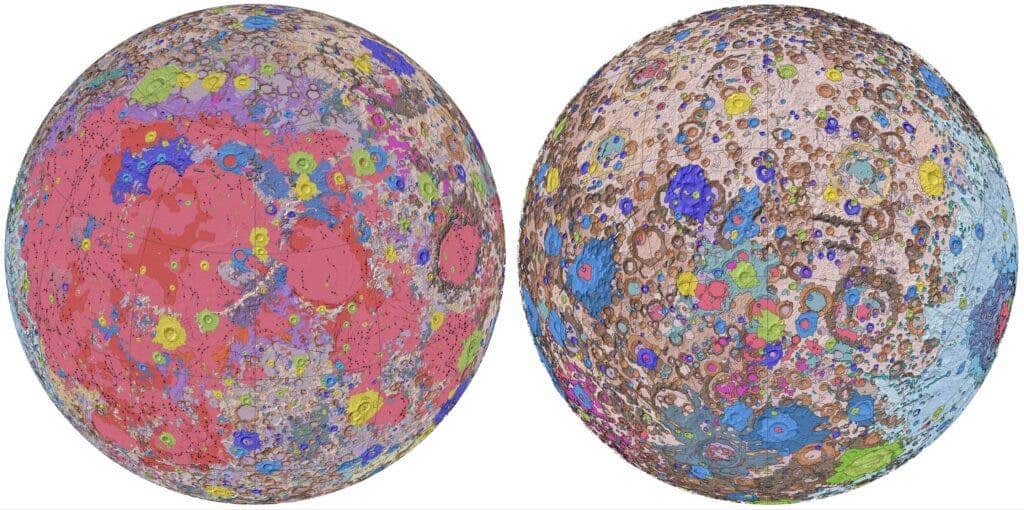It’s the first time the entire lunar surface has been geologically mapped and uniformly classified.
The lunar map, called the “Unified Geologic Map of the Moon,” will serve as a definitive blueprint of the moon’s geology which will be used for future human missions.

There are few things that captivate the human imagination like as the moon. As a geology geek, I daresay that geological maps are fascinating in their own right, but when you mix the two together — you know you’re gonna end up with something good.
The map used elevation data from the recent SELENE (Selenological and Engineering Explorer) mission led by the JAXA, the Japan Aerospace Exploration Agency. Topography for the north and south poles was supplemented with NASA’s Lunar Orbiter Laser Altimeter data.
Meanwhile, the geology information for the digital map came from six Apollo-era regional maps, along with recent satellite missions to the moon. Existing historical maps were redrawn and realigned with modern information, essentially merging old data with new data.
It’s a long and meticulous project, but the results are worth it.
“This map is a culmination of a decades-long project,” said Corey Fortezzo, USGS geologist and lead author. “It provides vital information for new scientific studies by connecting the exploration of specific sites on the moon with the rest of the lunar surface.”
The result isn’t just a pretty picture or a digital model of the moon. It has very practical implications. The geology of the moon is very important for planning future missions and establishing scientific objectives.
“People have always been fascinated by the moon and when we might return,” said current USGS Director and former NASA astronaut Jim Reilly. “So, it’s wonderful to see USGS create a resource that can help NASA with their planning for future missions.”
The moon’s pockmarked surface tells a story of its geological past (and to an extent, a story of our planet’s geological past, and even the solar system’s past). The map is dominated by the pink hues of the Imbrian era, which occurred some 3.5 billion years ago. During the Imbrian era, the moon was bombarded by asteroids, creating many of the impact craters we see on the surface today.
Overall, the geology of the moon is very different from that of the Earth, featuring no plate tectonics and vast basaltic plains that emerged from Imbrian volcanism.
If you want to find out more information about the map, you can read the abstract or download it directly in full resolution at the Unified Geologic Map of the Moon website.


